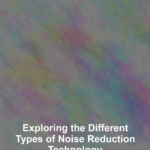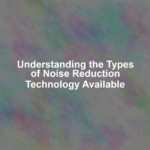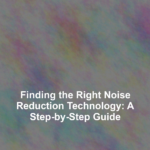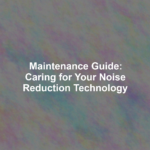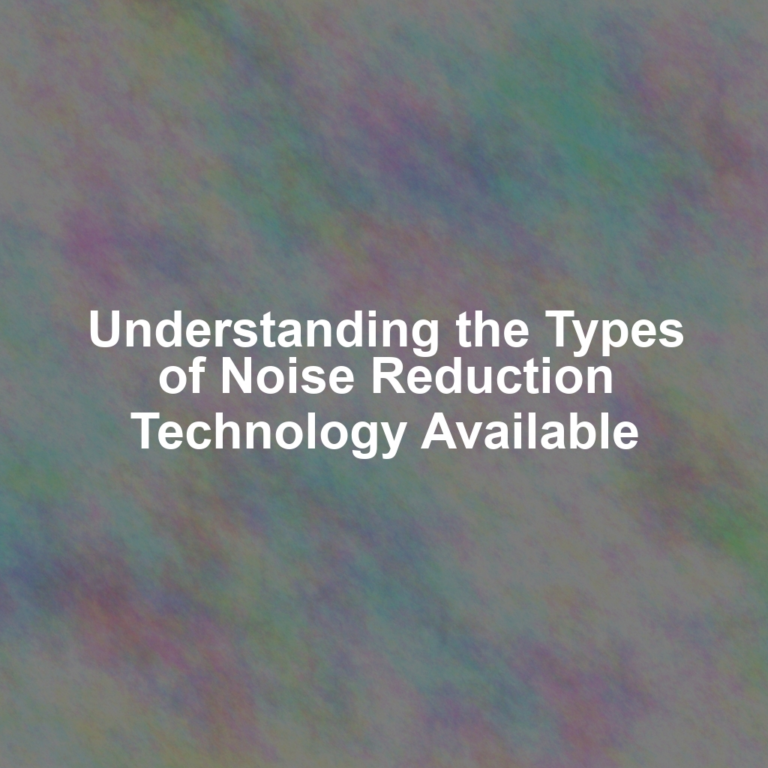You might be surprised to learn that the concept of noise reduction extends far beyond the foam earplugs you keep in your nightstand. As someone navigating the cacophony of modern life, youG??re constantly bombarded with sounds that can be distracting, stressful, or even harmful to your hearing.
However, the technology designed to combat this noise pollution is as varied as the sounds themselves. From the intricate algorithms of active noise control systems to the sheer mass of soundproofing materials, the mechanisms at work are as fascinating as they are effective.
As you consider the quietude you seek, whether in your home, at your workplace, or while on the move, the next few paragraphs will unveil the layers of innovation that stand between you and the worldG??s din, perhaps changing the way you listen to silence forever.
Understanding Noise Cancellation
Noise cancellation technology actively counters ambient sounds to provide you with a quieter listening experience. ItG??s not just about muffling the noise; this tech cleverly uses microphones to pick up external sound waves and creates inverse waves to cancel them out. YouG??re essentially equipped with a personal bubble of silence, whether youG??re on a noisy flight or in a bustling cafe.
YouG??ll find two primary types of noise cancellation: passive and active. Passive noise cancellation isnG??t electronic; itG??s about the physical design of the product, like over-ear headphones that block out sound by their shape and materials. Active noise cancellation (ANC), on the other hand, is where the real tech magic happens. ItG??s all about the electronics that detect and analyze the sound pattern of incoming noise and then generate that G??anti-noiseG?? signal to neutralize it.
You might think ANC drains your headphoneG??s battery faster, and youG??d be right. But donG??t let that deter you; the peace it offers can be well worth the trade-off. Plus, advancements are constantly being made to improve efficiency. When youG??re shopping for headphones, pay attention to whether they offer active noise cancellation to ensure youG??re getting the quietest listening experience possible.
Soundproofing Materials Explained
When it comes to silencing your space, soundproofing materials are essential, acting as barriers to prevent noise from entering or leaving a room. These materials absorb, dampen, or block sound waves, and theyG??re key in creating a quieter environment for work, sleep, or recording.
YouG??ll find a variety of soundproofing options to suit different needs. Mass-loaded vinyl (MLV) is a dense, flexible material you can add to walls, ceilings, and floors to block unwanted sound. ItG??s especially effective when paired with other materials like drywall or foam panels.
Acoustic foam panels are lighter and designed to absorb sound waves, reducing echo and reverberation in a space. These panels are great for studios or home theaters where sound clarity is crucial. Another option, acoustic tiles, can be used on ceilings and walls to control sound reflections.
For gaps around doors and windows, weatherstripping and acoustic seals can make a big difference. TheyG??re easy to install and prevent sound leaks that can undermine your soundproofing efforts.
DonG??t forget about insulation. Fiberglass and rockwool are excellent sound absorbers and can be installed within walls and ceilings to enhance soundproofing.
Each material has its strengths, and often, a combination provides the best results. Consider the specific sounds youG??re dealing with and choose materials that target those frequencies for the most effective noise reduction.
Acoustic Paneling Applications
Having explored the various soundproofing materials, letG??s now consider the practical applications of acoustic paneling in everyday environments. YouG??ll find that acoustic panels are versatile, serving purposes that range from improving sound quality to reducing noise pollution in both public and private spaces.
HereG??s how you can use acoustic panels effectively:
-
Recording Studios: TheyG??re essential for recording studios, where clarity and control of sound are paramount. By installing these panels, you eliminate echoes and background noise, ensuring that recordings are crisp and clear.
-
Home Theaters and Entertainment Rooms: To enhance your movie-watching experience, acoustic paneling helps create an immersive environment by balancing the sound within the room, so youG??re not disturbed by outside noises.
-
Offices and Conference Rooms: In these spaces, reducing echo and external noise is crucial for effective communication. Acoustic panels can significantly improve speech intelligibility, making meetings and teleconferences more productive.
Active Noise Control Systems
Active noise control systems, often referred to as noise-cancelling technology, are designed to reduce unwanted ambient sounds using sound waves that are specifically generated to cancel them out. HereG??s how they work: microphones pick up the noise from your surrounding environment and send that information to a noise-cancelling circuit. This circuit then creates a new sound wave thatG??s the exact opposite (also known as G??anti-noiseG??) of the ambient noise. When these two sound wavesG??the ambient noise and the anti-noiseG??meet, they effectively cancel each other out, a process known as destructive interference.
YouG??ll find this technology in a variety of products, from high-end headphones to cars. In headphones, active noise control helps to create a quiet, immersive experience, especially useful in noisy environments like airplanes or busy offices. In vehicles, it contributes to a more peaceful cabin by minimizing engine and wind noise.
ItG??s important to note that while these systems are highly effective at reducing consistent, low-frequency sounds, theyG??re less capable of cancelling out abrupt or high-frequency noises. That said, advancements in technology are continuously improving their range and effectiveness, so youG??re likely to experience better noise cancellation as new models hit the market.
Personal Hearing Protection Devices
Beyond the realm of active noise control systems, personal hearing protection devices offer a different approach to safeguard your ears from excessive noise. Rather than canceling sound through high-tech means, these devices physically block sound from entering your ear canal. Whether youG??re a musician, construction worker, or simply someone looking to enjoy some quiet, thereG??s a type of personal hearing protection tailored to your needs.
HereG??s what you need to know about the most common types:
-
Earplugs: These are inserted into the ear canal and are often made of foam or silicone. TheyG??re inexpensive, disposable, and you can easily carry them around. TheyG??re ideal for use in moderately noisy environments.
-
Earmuffs: These fit over the entire outer ear and provide a seal against noise. TheyG??re more effective for higher levels of noise and are often used in industrial settings.
-
Custom Ear Protection: Tailored to fit your ears perfectly, these offer the highest level of protection and comfort. Musicians and sound engineers typically favor them for their ability to preserve sound quality while reducing volume.
When youG??re exposed to loud environments, itG??s crucial to protect your hearing. Choose the right device for you and make sure youG??re using it correctly to maintain your auditory health.
Conclusion
YouG??ve now explored the world of noise reduction, from materials that dampen sound to cutting-edge active noise control. Whether youG??re installing acoustic panels in your studio or slipping on a pair of noise-canceling headphones, youG??re equipped to create your oasis of calm.
Remember, effective noise reduction blends technology and design, so consider your environment and needs to find the perfect solution. Silence is golden, and with this guide, itG??s within your reach.

